
New York City has now been given three great new train halls in the last decade. Arguably the most famous is the Oculus at the World Trade Center. A block away, also, confusingly, referred to as an oculus, is the MTA’s Fulton St Transit Center. Today we welcome one which has been in the works for far longer than those: the Daniel P. Moynihan Train Hall, part of the James Farley Post Office building.
Moynihan has been in the works in one form or another since the early when the late Senator Daniel Patrick Moynihan proposed it as an alternative to Penn Station across the street. Everything that can be said about Penn Station has been said so there is no point rehashing what a soulless, dreary experience using Penn Station is. There is almost no way Moynihan could have failed to be an improvement.
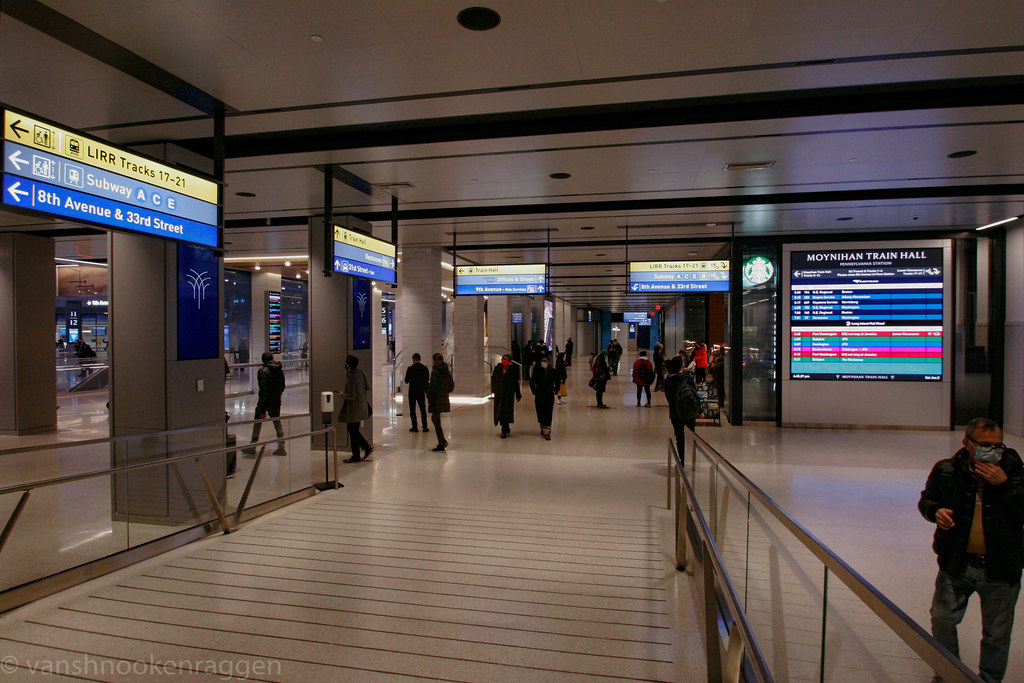
When first arriving at Moynihan one is greeted with a bit of an anti-climax: the grand McKim Mead & White façade gives way to rather bland and utilitarian hallways funneling commuters into the building. The halls of the building resemble those of modern airport, another experience most New Yorkers aren’t accustomed to with the old LaGuardia and JFK terminals.
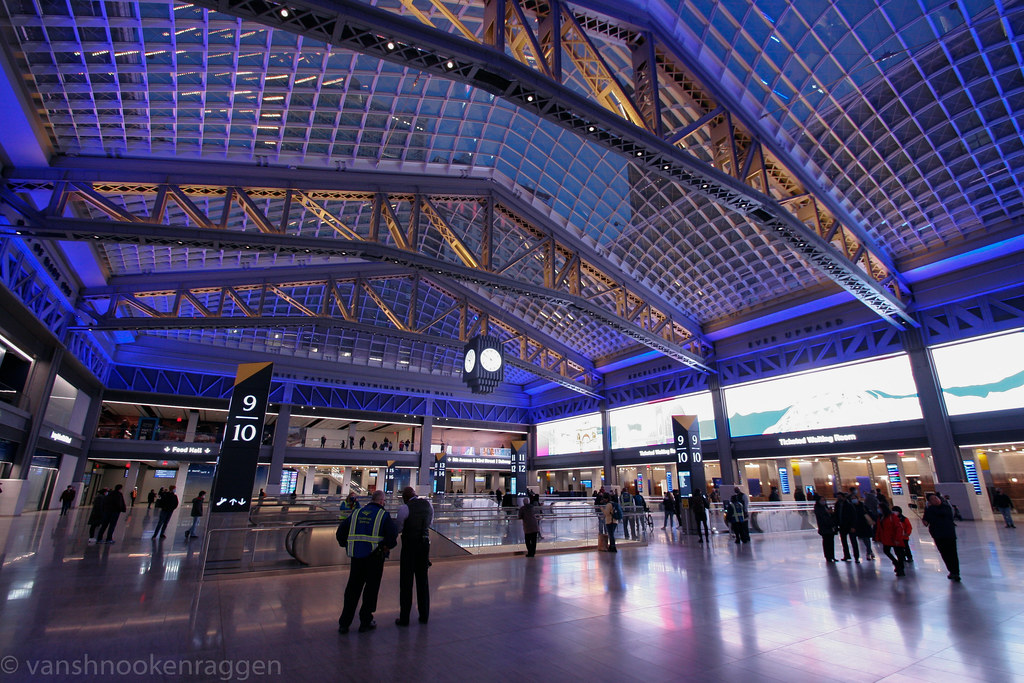
Quickly one finds themselves drawn into the great hall. The hall is deigned to draw the eyes upwards to the dramatic arched glass domes supported by large iron lattice work which harkens back to the original Penn Station. Unlike the cramped corridors of the dungeons across 8th Ave, the hall offers large open space for the commuter to orient themselves and more easily make their way through throngs of travelers all crisscrossing one another.
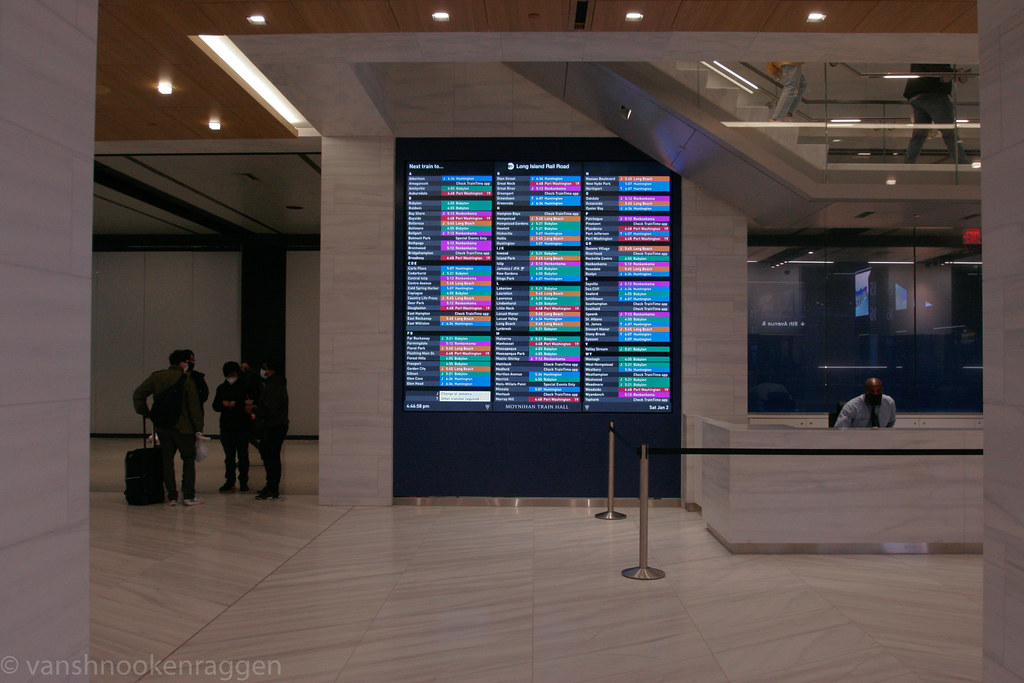
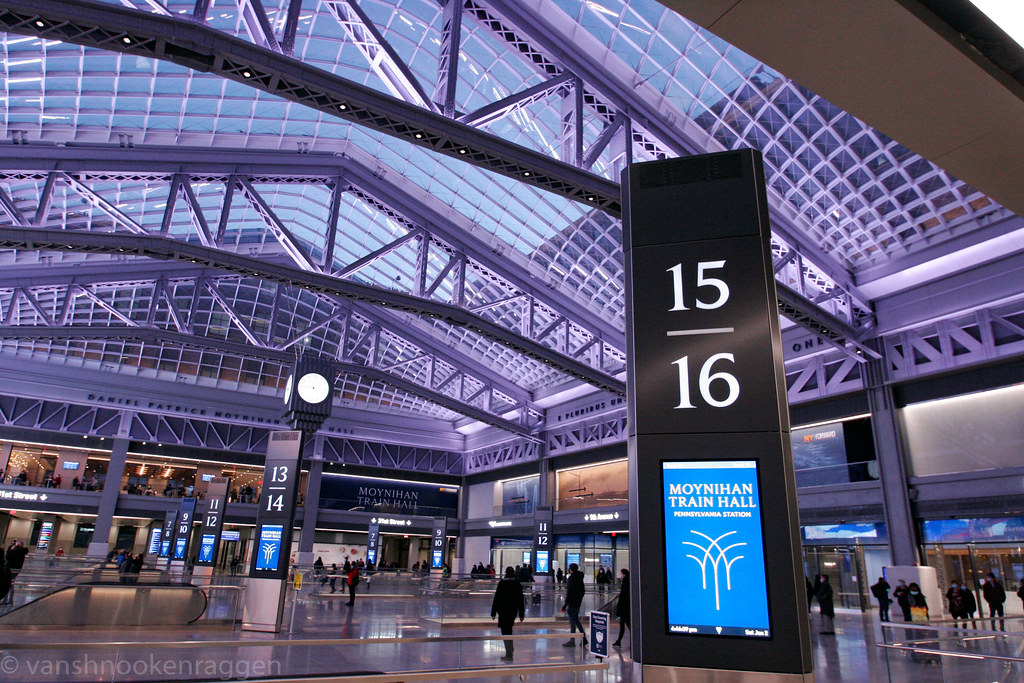
The wayfinding, for the most part, is large and easy to read. My one gripe was that the Amtrak baggage claim is down a corridor away from the main hall and the signage is smaller than the grand “9th Avenue” in illuminated characters right above it. This, however, is easily fixable.
As always, every New Yorker is entitled to their own opinion and social media has been flooded with hot-takes by critics with their own viewpoints. I get the feeling that much of the criticism about Moynihan isn’t about the building itself but rather the critic ascribing their own pet problems on to what is still a blank slate. Most of what is being bemoaned, luckily, are things that can be fixed relatively easily. A few people have brought up the fact that on the outside, no new bike racks have been added. This speaks to a large cultural problem within transportation in this country and especially New York which is pathetic at multimodal transport.

One of the main critiques I’ve seen online is a lack of seating. Public seating in New York is something that we as a culture seem to be averse to. Public parks are closed at night to prevent the homeless from taking up residence. Many plazas in midtown are in fact privately run and any undesirables are kicked out. Along with the current nightly closures of the subway, Moynihan is closed from 1am to 5am. Having few open seats is the design here. Homelessness is a larger problem than ever in New York but allowing the tent cities forming along 34th St to take up residence is Moynihan isn’t going to solve anything.
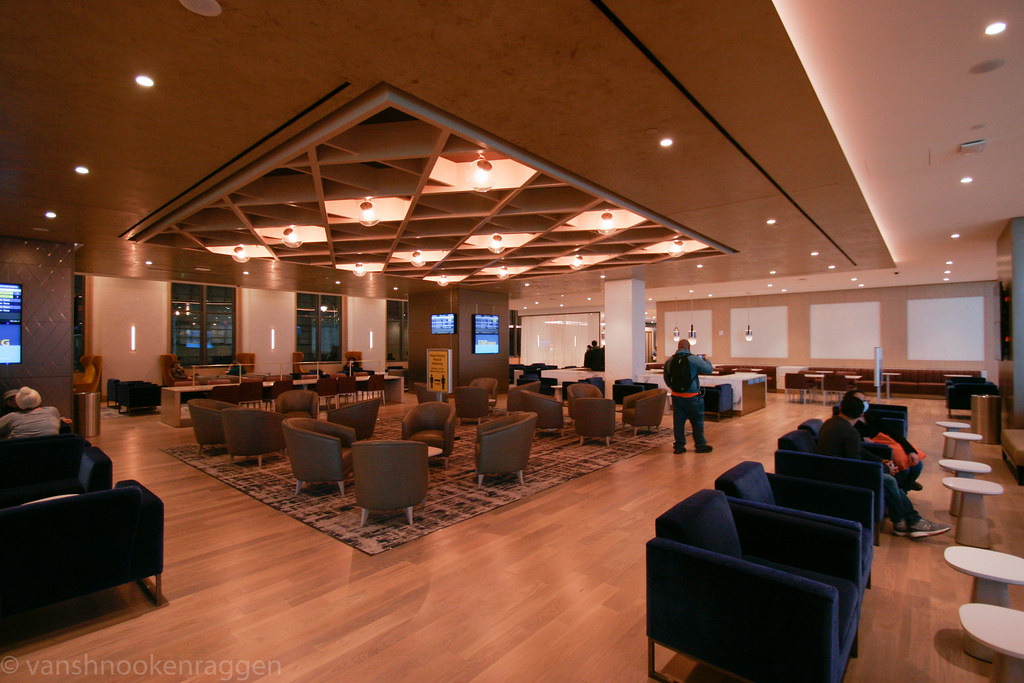
The seating areas are there for the more long-distance rider and Amtrak provides two spacious seating areas. The more utilitarian Red Cap area is adjacent to the main hall and the Metropolitan Lounge on the second level which feels more like a private club and restaurant (It even has luggage cubbies!) I feel like much of the criticism of these private lounges comes from the left who see them as classist.
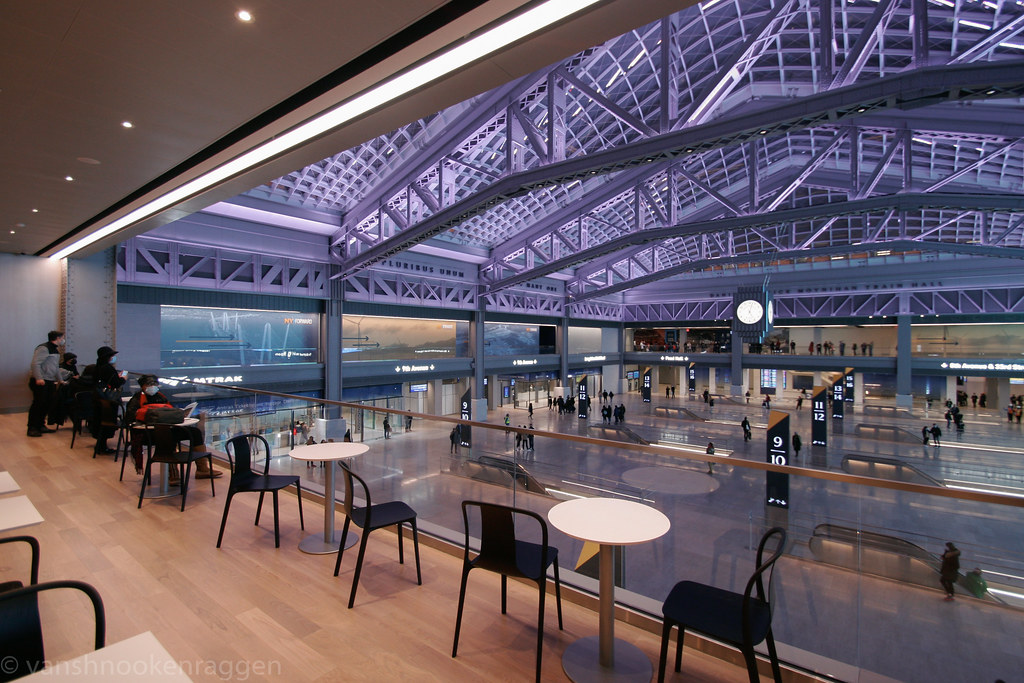
But if commuters aren’t going to spend much time in the station and long-distance travelers, with Amtrak tickets, are provided for, what is the point of more seating? After all, the grand front steps along 8th Ave rising to the entrance of the James Farley Post Office still offer some of the best public seating in the whole city.
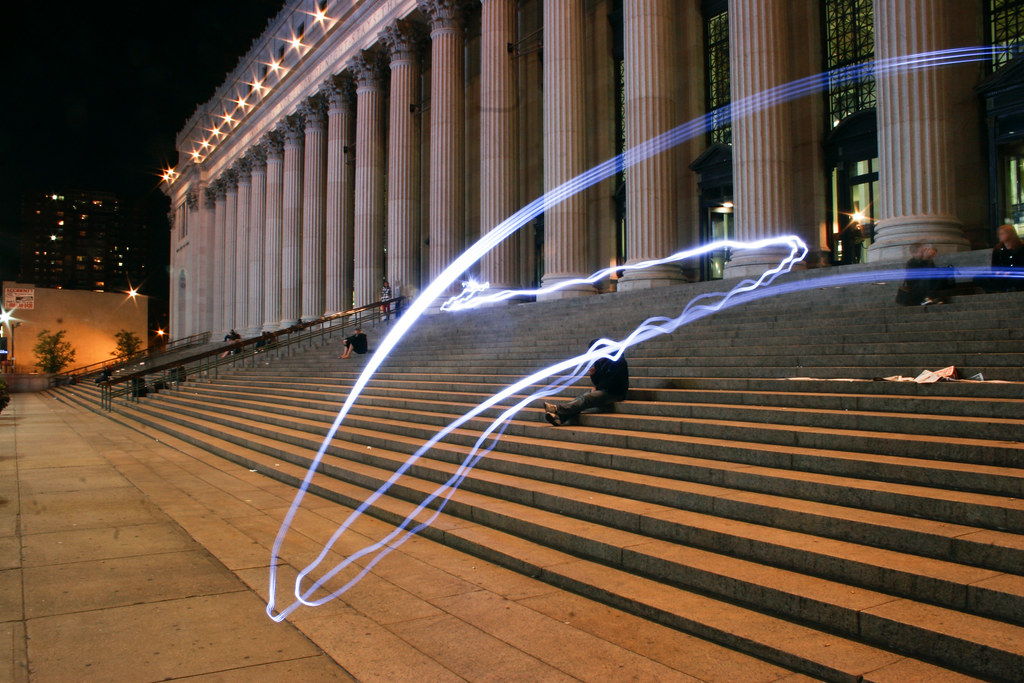
The countless stores and shops which will eventually open throughout the station will offer much more seating for the daily commuter. In fact, the lack of these active areas is probably what is obscuring the potential of the space. Right now, walking through the building feels like touring an empty apartment and trying to imagine where your furniture will go. Only once the shops have opened and the commuters returned will we be able to truly judge how the building works as a station.
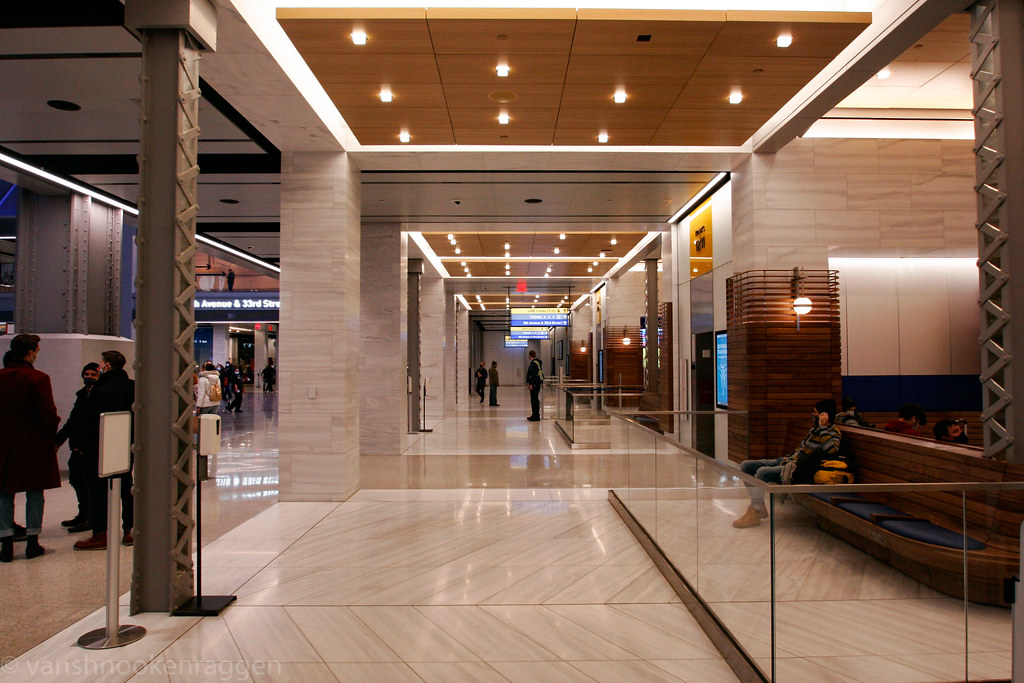
Commuters aren’t really the target audience for Moynihan either, another point of frustration and confusion. While commuters certainly would use seating if offered, the majority of commuters are passing through the station quickly on their way to a train which departure time they have memorized.
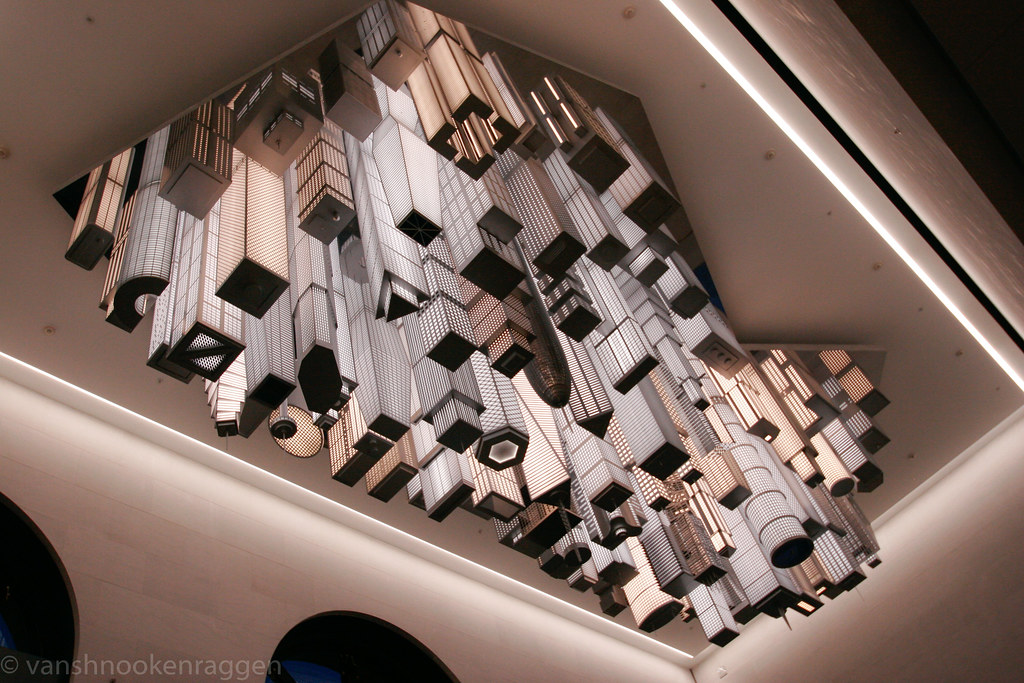
Moynihan is located at the western edge of the underground platforms. It does not provide direct access to tracks 1-4 which are used by New Jersey Transit, nor tracks 17-21 which are used by Long Island Railroad (although these can be accessed via the West Concourse, previously opened). The LIRR has a full ticket window and departure boards are prominent and easy to spot.
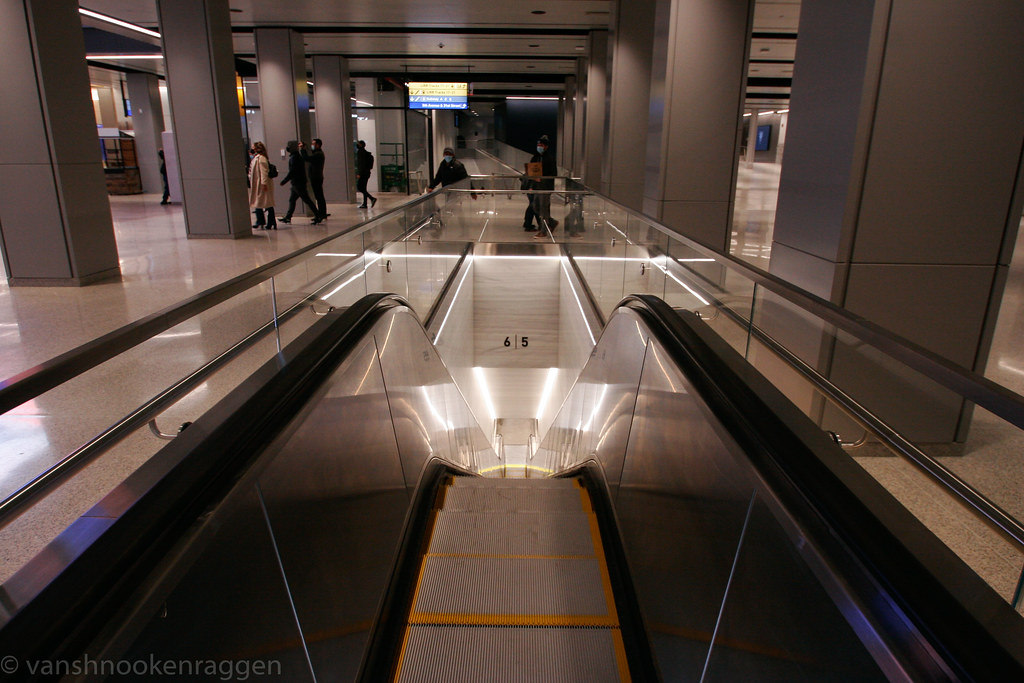
But NJT does use tracks 5-12 which only a hardened commuter would know. Moynihan is primarily an Amtrak station with LIRR coming in at a close second. NJT is deliberately left out. Signage directing riders to Penn Station across the street is almost impossible to find. One might wonder if this was done on purpose. Moynihan was built by a public-private partnership between Amtrak, New York State, and real estate developers. New Jersey commuters weren’t an afterthought, they were designed to be kept apart.
Malicious as this may seem, the silver lining to Moynihan is now that Amtrak operations are being moved across the street their former quarters are ripe for expansion. While nothing has been set in stone, the moving Amtrak out of Penn Station means that its former waiting room can be repurposed for an expanded LIRR and NJT station. The LIRR section of Penn Station just got a soaring new entrance on 33rd St which opens the dungeon to natural light. The renovations of this section are still ongoing and as of now make the station feel even more confusing and depressing. One day, though, LIRR commuters will have their day.
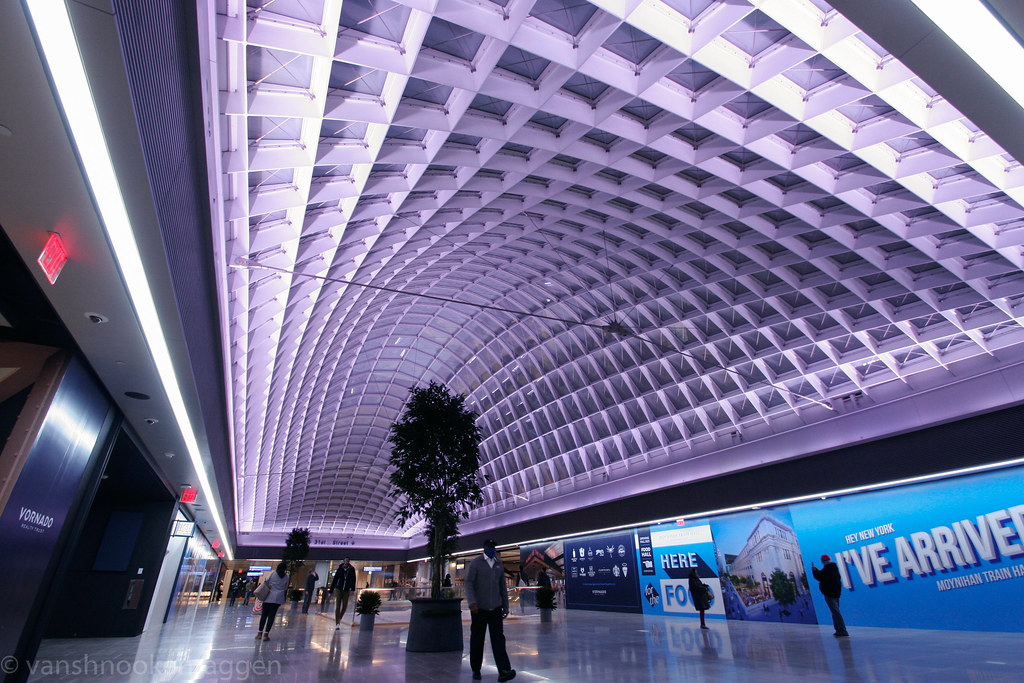
Governor Andrew Cuomo’s next act for Penn Station is the proposed Penn Station South, an expansion of the station with new tracks and platforms under the city block bordered by 8th Ave, 31st St, 7th Ave, and 30th St. The tracks of Penn South are designed to hook into the proposed Gateway Tunnel, two new tubes between New Jersey and Manhattan. It stands to reason then that any expansion of the NJT waiting areas will be put off until Penn South is under design.
All of these improvements still don’t seem to matter to the hardcore regional rail crowd on Twitter. Many see any improvement to Penn Station that doesn’t involve through-running trains between Long Island and New Jersey as a waste of money and done solely for vanity. Again, these are critics who are ascribing their own pet project problems to a project for which was never intended to address.
Large new train halls are all well and good, they argue, but this is just another in a long line of politically motivated “transit” projects costing billions of dollars which does not improve overall system capacity. This is certainly an argument with which I sympathize, but in this instance, I feel like the critics are missing the forest for the trees. Rome wasn’t built in a day, and in fact Moynihan was first proposed in 1997.
There is more to capacity than how many trains are running through a station. The problem with Penn Station is that it currently serves a function for which it was never designed. Penn Station was built for long distance travel. Long distance operations are different from those of commuter systems. Trains need time to load and unload supplies and baggage so more tracks are needed. Platforms can be narrower as travelers don’t need to be waiting on the platforms.
Commuter rail requires a high throughput to get as many trains into a station, unload as quickly as possible, and get moving again for the next train. Modern commuter or regional rail stations feature wide platforms with many egress points so that passengers can board the trains and exit the station en-mass as quickly as possible. Penn Station has narrow platforms with few egress points. Because of the number of tracks, trains must take more time traversing the interlockings on both sides of the platforms.
It may very well be a worthy project to convert parts of Penn Station into a more commuter friendly layout with more efficient operations that lead to a higher overall capacity. But those commuters and travelers will still need to pass through a station on their way to their ultimate destinations. Having a train hall like Moynihan will absolutely make their experience better and opens up improvements for the rest of Penn Station.

Moynihan Station was never supposed to be a silver bullet for Penn Station’s many issues. It was one part of a long-term project. Many of the critics have not even been to see the station with their own eyes which makes it hard to take them seriously. It’s ok to like nice things even when there are still problems. The truth is the majority of the public and politicians don’t understand the operational limitations of the station. It’s hard to communicate technical problems to the masses, to whom such matters will never really matter. Perhaps the best part of Moynihan is that now we can continue the conversation about the needs of Penn Station.

In terms of form and function I believe that Moynihan is the best of our post-9/11 infrastructure binge. I’m far more critical of the previous two, flashy new headhouses for which we taxpayers have paid considerably. The MTA’s Fulton Center (which my friend has dubbed M.C. Escher Hall) is far less successful at grand artistic gestures. While passing through one’s eyes are rarely turned skyward to admire the large oculus in the ceiling. Fulton Center is far more utilitarian in use and design. But it legitimately makes transferring through a maze of underground passages easier.
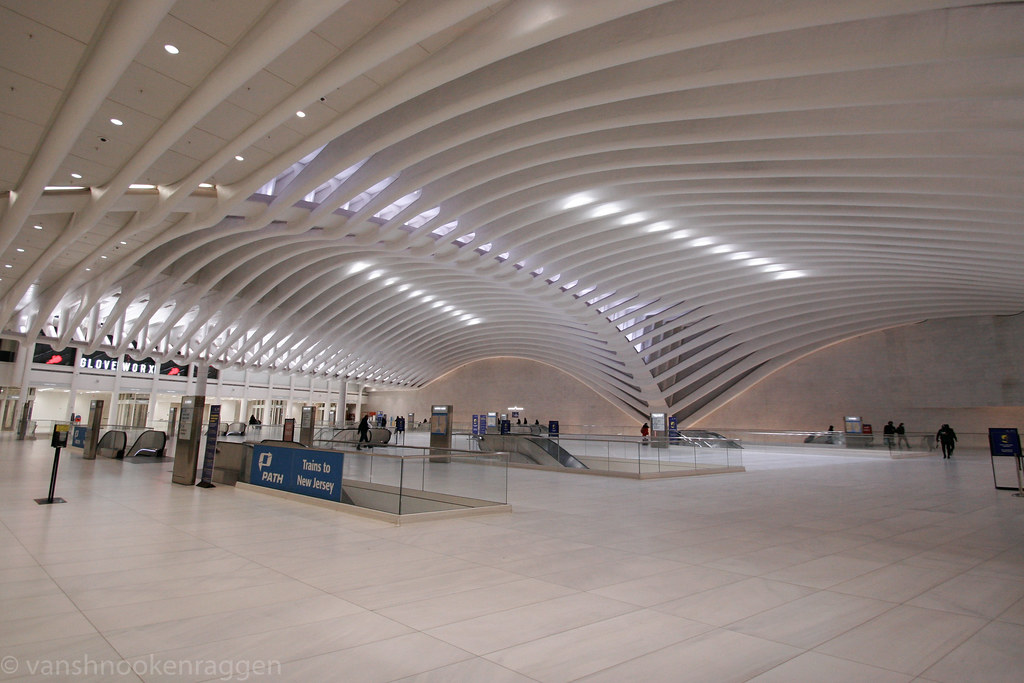
The World Trade Center Oculus on the other hand is still my least favorite beautiful building. A $4 billion mall with a train station at the back. Some have critiqued Moynihan of being too much of a mall but I’m fine with this since it sticks the landing. WTC is vanity, pure and simple. The signage for PATH and NYC Subway are so minimal that one might be mistaken for not realizing you can catch a train at all. The PATH side is particularly bad since there is endless open space which could elegantly support better signage. So for all its faults, we got a winner with Moynihan.
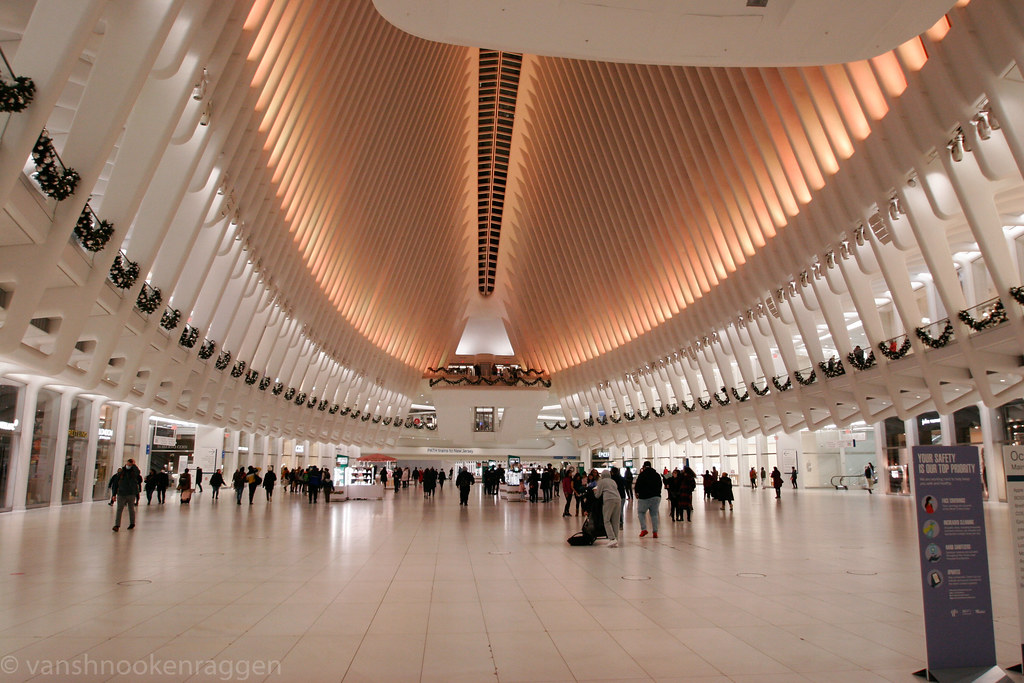
New Yorkers are a jaded bunch. We don’t often get nice things and when we do, we always find something to criticize. I’m as guilty as anyone of doing this. But we need to understand that if New York is really the city we all imagine it to be then we do deserve nice things. Nice things in New York take time, they require compromises where no one will ever get everything they want. But nice things give us enough hope to keep working for more nice things.
Moynihan was never supposed to solve every problem about Penn Station and our regional rail network. But in solving one problem it allows us to move on with a better idea of how to solve the next ones. An architect friend once told me “well, my philosophy is: as designers, we make a good theater, we don’t direct the play”. Moynihan is a train hall well designed for improved flow and the traveling experience. Right now, the play is pretty bad. But at least the theater is nice enough to where we can find the inspiration to start putting on better plays.

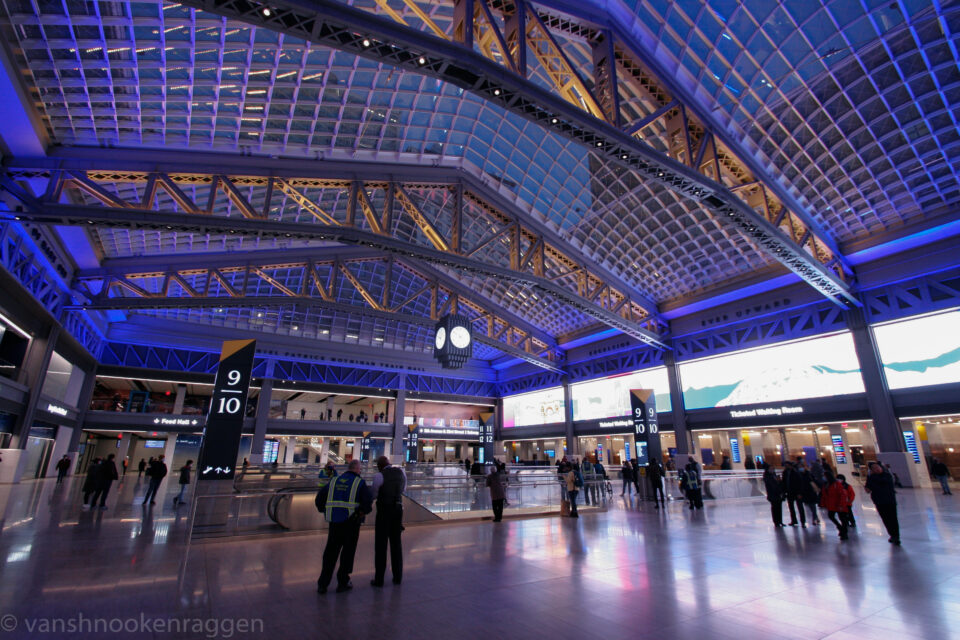
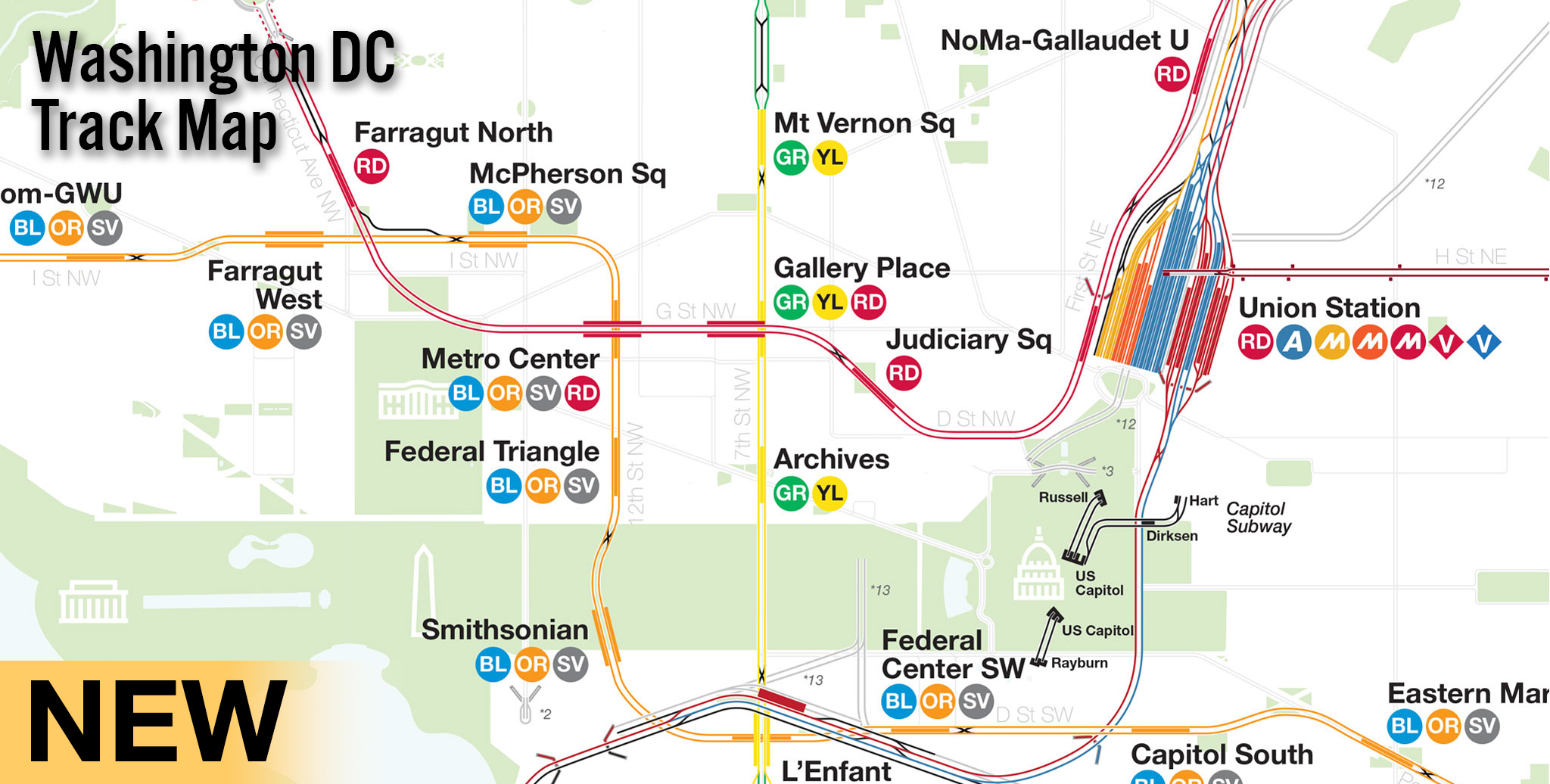
Very well-written and I agree with essentially everything. Moynihan solves one problem — not all of them — and also literally makes room for other problems to be solved.
I don’t like how the media is calling Moynihan a “replacement” for Penn. After people began wondering whether the old Penn still exists, I had to go into some Facebook posts and let people know Moynihan is an *extension* of Penn. (And another extension is planned! Woohoo ???? )
One thing to remember is that whether or not we get through-running or whether the tracks and platforms are changed up substantially to maximize efficiency, Penn will continue to be the terminus for Amtrak’s many long-distance sleeper trains.
Well written article, for sure. I’m looking forward to seeing the long-anticipated Moynihan Train Hall (and the new LIRR entrance) as soon as we can travel again. I agree with you also about Fulton, which was a big disappointment to me. But my dissatisfaction with the WTC far exceeds yours. I consider the place a giant white elephant, although if it were built with private money as an impressive shopping mall, that would be OK. But the fact that it cost FIVE BILLION DOLLARS of precious government funding is completely unforgiveable. As I recall, that (post-9/11 rebuild) money was originally supposed to go for a direct rail connection (either LIRR or subway) between JFK Airport and Lower Manhattan.
From what I recall it was basically a present to NJ as part of the rebuild of the WTC. Basically everything was being spent on the NY side and NJ, half of the PANYNJ, wanted to get SOMETHING. Lower Manhattan to JFK was another project that was trying to get grafted into the WTC rebuild and thankfully it didn’t. Basically the Oculus is a political baby born of two parents trying to keep the marriage going. At least it’s pretty?
In case it’s not confusing enough, the art installation in stalled in 1998 at the Chambers Street IND station, mosaic tile eyes modeled on school children, is also called oculus http://web.mta.info/mta/aft/permanentart/permart.html?agency=nyct&line=A&artist=1&station=9